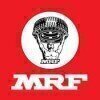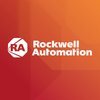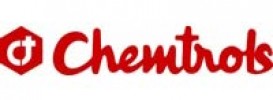Top 100 PLC Interview Questions and Answers
Updated 16 Jul 2025

Asked in Drillmec India

Q. Which modules are installed in the PLC in the rig you are working on?
I am not currently working on a rig, so I do not have information on the specific modules installed in the PLC.
If I were working on a rig, I would consult the rig's documentation or speak with the rig's electrical team to determine which modules are ...read more

Asked in BHEL

Q. What are the differences between PLC and SCADA?
PLC is a hardware device that controls industrial processes, while SCADA is a software system that monitors and controls those processes.
PLC is a programmable logic controller that controls the input/output of industrial processes.
SCADA is a supervis...read more
Asked in Net Worth Controls

Q. What is the difference between PLC and RTU?
PLC is a programmable logic controller used for industrial automation, while RTU is a remote terminal unit used for remote monitoring and control.
PLC is used for controlling processes in industrial automation, while RTU is used for remote monitoring ...read more

Asked in Reliance Communications

Q. What type of output does a PLC provide: analog or digital?
The output of PLC can be both analog and digital depending on the application.
PLC can output digital signals such as on/off or high/low signals.
PLC can also output analog signals such as voltage or current signals.
The type of output depends on the ap...read more

Asked in Marine Electricals

Q. How many types of PLCs are there, and what are their communication protocols?
There are various types of PLCs with different communication protocols.
PLC types include Programmable Logic Controller, Compact Programmable Logic Controller, Modular Programmable Logic Controller, and more.
Communication protocols include Modbus, Pro...read more
Asked in Finesco International

Q. What are PLC and DCS?
PLC stands for Programmable Logic Controller and DCS stands for Distributed Control System.
PLC is a digital computer used for automation of electromechanical processes.
DCS is a control system used to control and monitor industrial processes.
PLC is us...read more


Asked in Lean Automation

Q. What is PLC and what are its programming languages?
PLC stands for Programmable Logic Controller. It is a digital computer used for automation of electromechanical processes.
PLC is used in various industries for automation purposes.
It is programmed using different languages such as ladder logic, funct...read more

Asked in Danblock Brakes

Q. What types of modules are used with PLCs?
The types of modules used with PLC include input modules, output modules, communication modules, analog modules, and specialty modules.
Input modules are used to receive signals from sensors and other devices.
Output modules are used to send signals to...read more

Asked in Plasma Induction

Q. What are the different types of PLC programming languages?
PLC language refers to the programming languages used to program programmable logic controllers.
PLC languages include ladder logic, structured text, function block diagram, and instruction list.
Ladder logic is a graphical programming language that re...read more

Asked in Jain Irrigation Systems

Q. What are the differences between embedded and PLC automation?
Embedded automation is used for specific tasks while PLC automation is used for controlling entire systems.
Embedded automation is used for a single task or function, such as controlling a motor or sensor.
PLC automation is used for controlling entire ...read more
PLC Jobs




Asked in MRF Tyres

Q. How do you communicate between a PLC and an HMI?
PLC and HMI can communicate through various protocols such as Ethernet/IP, Modbus, Profibus, etc.
PLC and HMI can be connected through a physical cable or wireless connection
PLC sends data to HMI through the chosen protocol
HMI displays the data receiv...read more

Asked in Festo

Q. What types of electrical PLC protocols are available in the market?
There are several electrical PLC protocols available in the market.
Modbus: Widely used protocol for communication between PLCs and other devices.
Profibus: Commonly used in industrial automation for communication between PLCs and field devices.
Etherne...read more
Asked in Proficient Automation and Controls

Q. What communication protocols are used in PLCs?
PLCs use various communication protocols such as Ethernet, Modbus, Profibus, and DeviceNet.
Ethernet communication for high-speed data transfer
Modbus protocol for serial communication between devices
Profibus for fieldbus communication in industrial au...read more

Asked in Neo Metaliks

Q. Tell me about PLC panels and software generation.
PLC panels are hardware devices used to control and monitor industrial processes. Software generation involves programming these panels.
PLC panels are used in various industries such as manufacturing, energy, and automation.
They consist of hardware c...read more

Asked in Lotus Wireless Technologies

Q. What are PLCs and RTUs?
PLC stands for Programmable Logic Controller and RTU stands for Remote Terminal Unit. They are both devices used in industrial automation.
PLC is a digital computer used for automation of electromechanical processes.
RTU is a device used to connect rem...read more
Asked in Gayatri Paper Mills

Q. What are the inputs on a PLC?
Inputs on PLC are signals or data received by the PLC from sensors or other devices.
Inputs can be digital or analog
Digital inputs are either on or off, representing a binary signal
Analog inputs are continuous signals that can represent a range of val...read more

Asked in Rockwell Automation

Q. What is PLC scanning time?
PLC scanning time is the time taken by a PLC to complete one full scan cycle of reading inputs, executing logic, and updating outputs.
PLC scanning time is typically measured in milliseconds.
Factors affecting PLC scanning time include the complexity o...read more

Asked in TechnipFMC

Q. What are DCA and PLC?
DCA and PLC are commonly used acronyms in the field of engineering.
DCA stands for Direct Current Amplifier, which is a device used to amplify direct current signals.
PLC stands for Programmable Logic Controller, which is a digital computer used for au...read more

Asked in Veolia Water Technologies

Q. Explain the process of PLC selection and sizing.
PLC selection involves choosing the right programmable logic controller based on the specific requirements of the control system.
Consider the number of I/O points required for the system
Evaluate the processing speed and memory capacity needed
Take int...read more

Asked in Chemtrols Industries

Q. What is the memory of a PLC?
PLC memory is the storage area where the program and data are stored.
PLC memory is divided into two types: program memory and data memory.
Program memory stores the PLC program and is non-volatile.
Data memory stores the values of inputs, outputs, time...read more

Asked in TCS

Q. What is plc and what is communication?
PLC stands for Programmable Logic Controller, which is a digital computer used for automation of electromechanical processes. Communication refers to the exchange of information between two or more parties.
PLC is a specialized computer used in indust...read more

Q. Which models are used in PLC?
PLC models include relay logic, ladder logic, function block, and structured text for automation control.
Relay Logic: Traditional model using relays for control.
Ladder Logic: Graphical representation resembling electrical relay circuits.
Function Bloc...read more

Q. What is the function of a PLC and its process?
PLC stands for Programmable Logic Controller, used to automate industrial processes by controlling machinery and equipment.
PLC is a digital computer used to control automation processes in industries.
It receives input signals from sensors or switches...read more

Asked in suzuki motor gujarat

Q. What do you know about PLC troubleshooting?
PLC troubleshooting involves identifying and resolving issues with programmable logic controllers in industrial automation systems.
Understanding the PLC program and ladder logic
Checking for faulty wiring or connections
Testing input and output devices...read more

Asked in Bajaj Steel Industries

Q. What are the basics of PLC?
PLC stands for Programmable Logic Controller, which is a digital computer used for automation of electromechanical processes.
PLC is used to control machinery in manufacturing processes.
It uses a programmable memory to store instructions and specific ...read more

Asked in Varroc Group

Q. What do you know about PLC and PLC programming?
PLC stands for Programmable Logic Controller, used in industrial automation to control machinery and processes.
PLC is a digital computer used for automation of electromechanical processes.
PLC programming involves writing logic for controlling inputs ...read more

Asked in Arvind Fashions

Q. What is the difference between PLCs and Microcontrollers?
PLCs are specialized computers used for industrial automation, while microcontrollers are small computers used in various electronic devices.
PLCs are designed for controlling industrial processes, while microcontrollers are used in a wide range of el...read more

Asked in Sodexo

Q. What is the difference between a PLC and an RLC circuit?
PLC is a digital computer used for automation of electromechanical processes. RLC circuit is a passive circuit consisting of resistor, inductor and capacitor.
PLC is programmable and can be used to control various processes in industries.
RLC circuit i...read more

Asked in Falcon Autotech

Q. What is PLC, scope of industrial automation.
PLC stands for Programmable Logic Controller. Industrial automation involves using PLCs to control machinery and processes in manufacturing.
PLCs are specialized computers used to control industrial processes and machinery.
They are programmed using la...read more

Asked in Manweir LLC

Q. What are PLC and Ladder Logic?
PLC (Programmable Logic Controller) is a digital computer used for automation of electromechanical processes. Ladder logic is a programming language used to program PLCs.
PLC is a specialized computer used to control machinery and processes in industr...read more

Top Interview Questions for Related Skills
Interview Experiences of Popular Companies










Interview Questions of PLC Related Designations



Reviews
Interviews
Salaries
Users











